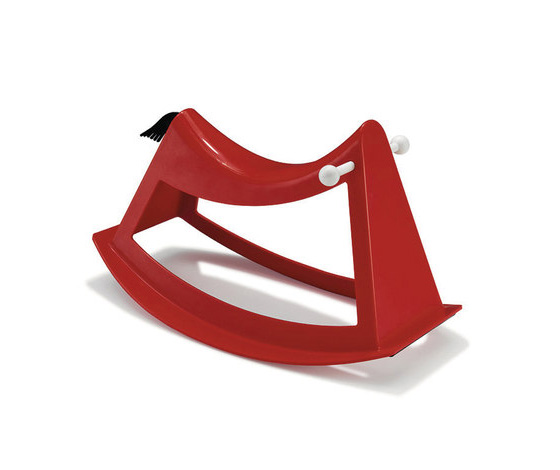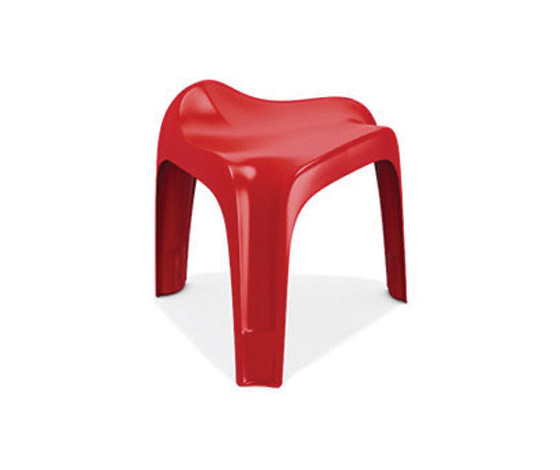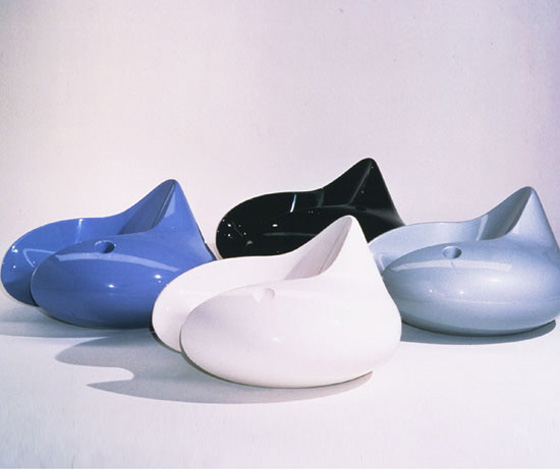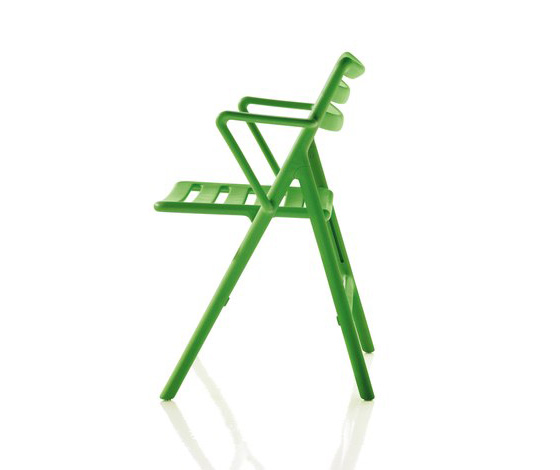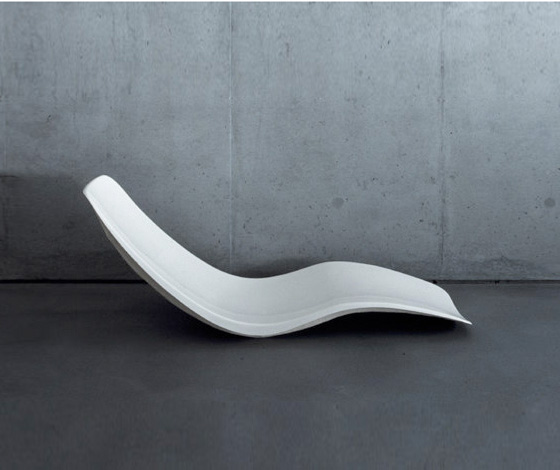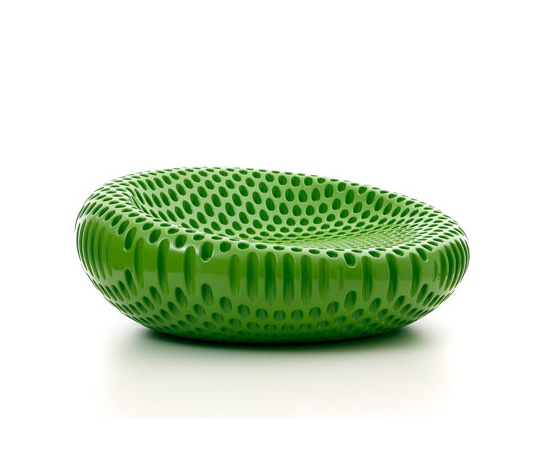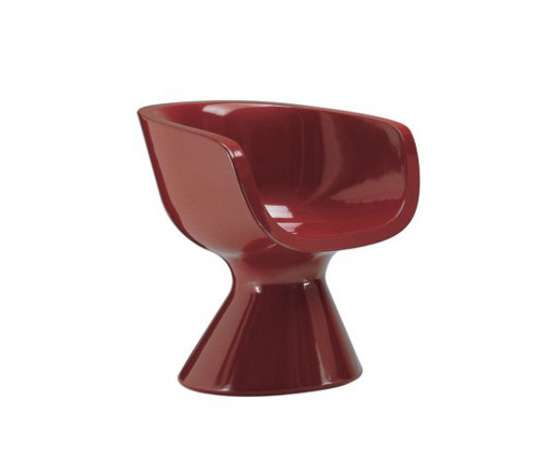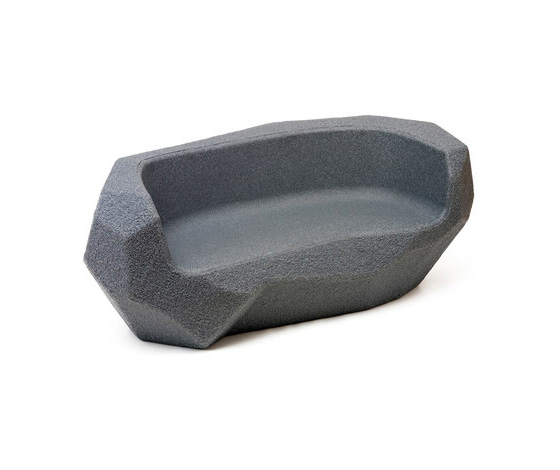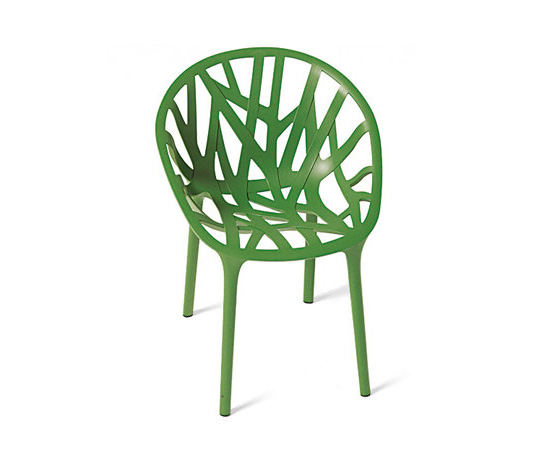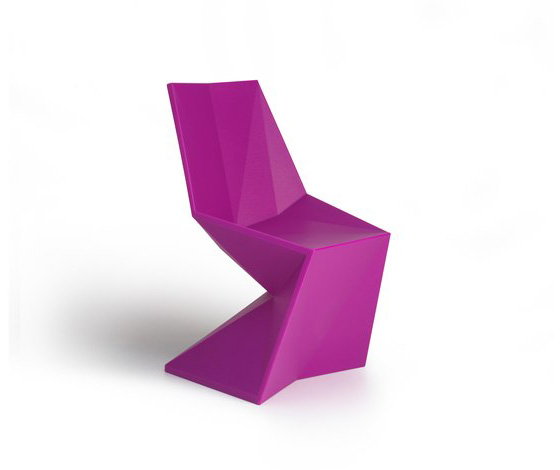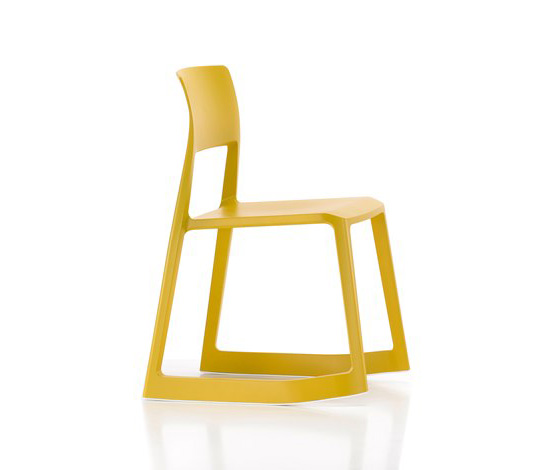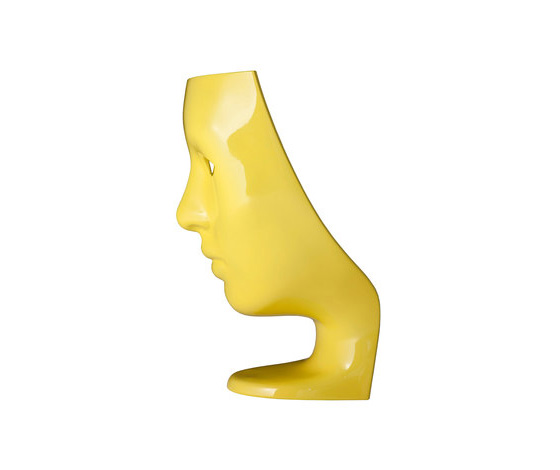Plastic - the mouldable material of modern chairs
Texte par Susanne Fritz
Suisse
17.02.12
In the visual arts the term 'plastic' is used for any form of creation involving a medium that can be sculpted or moulded, but it is also the term for a type of material that revolutionised the twentieth century. Using a number of plastic chairs as an example Architonic outlines the metamorphosis of this item of furniture which more than any other is deeply involved in cultural history.
Rocking Sculpture, manufacturer Wilkhahn, Designer Walter Papst, 1958
The invention of plastic was the result of the increasing scarcity of raw materials for which the process of industrialisation was responsible. Expanding markets and an increase in production demanded new solutions. As a result the early inventors and researchers concentrated in particular on imitating existing rare and expensive materials such as ivory, mother-of-pearl, precious types of wood and expensive kinds of natural stone such as marble or onyx.
Panton Chair Classic, Vitra, Designer Verner Panton, 1959/60, hard foam plastic shell, surface painted with a gloss lacquer
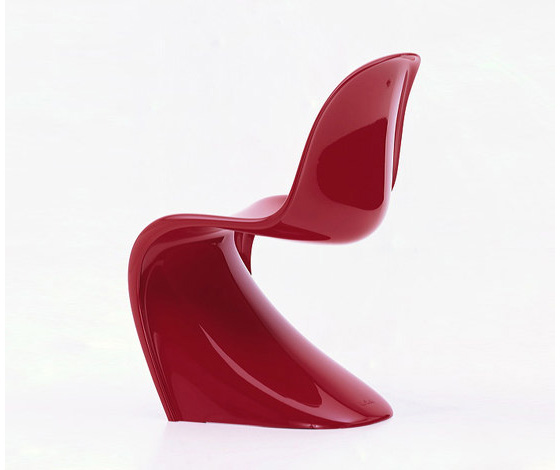
Panton Chair Classic, Vitra, Designer Verner Panton, 1959/60, hard foam plastic shell, surface painted with a gloss lacquer
×A wide and diverse range of applications quickly opened up, and against the background of the two world wars governments invested a lot of money in the research and development of inexpensive materials which would be suitable for mass production and above all for military equipment. As a result the focus was on functionality and improving material properties such as increased resistance to wear and tear, temperature tolerance and durability.
Cantilever 290, Nielaus, Designer Steen Østergaard,1966, reedition 2011, polyamid (nylon) reinforced with fibre-glass, full-depth coloured and injection-moulded in one single operation
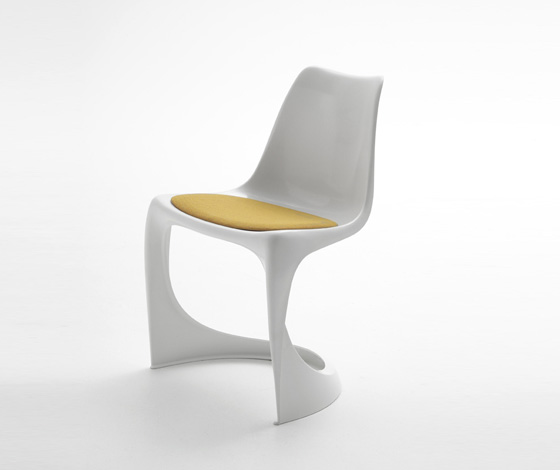
Cantilever 290, Nielaus, Designer Steen Østergaard,1966, reedition 2011, polyamid (nylon) reinforced with fibre-glass, full-depth coloured and injection-moulded in one single operation
×Blow 270, Zanotta, Designer Jonathan de Pas, Donato D Urbino, Paolo Lomazzi, 1967 Clear, calendered PVC, high-frequency electronically welded
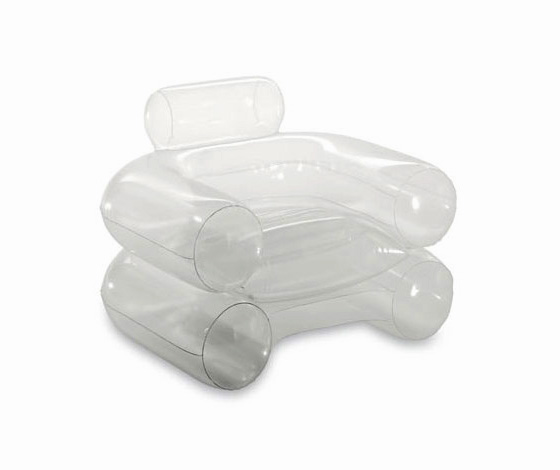
Blow 270, Zanotta, Designer Jonathan de Pas, Donato D Urbino, Paolo Lomazzi, 1967 Clear, calendered PVC, high-frequency electronically welded
×As early as the 1930s cameras, hair dryers and other small devices were produced from plastics with resounding names such as Catalin, Xylonite and the familiar Bakelite. Plastic was not regarded as a cheap substitute but as a glamorous material created by new technical achievements, with products which may have been mass produced but could nevertheless only be afforded by a part of the population – they were early lifestyle products.
Casalino stool 2012/00, Casala, Designer Alexander Begge, 1971 Reedition 2007
During the post-war period a significant change took place. The driving force of competitive rearmament had led to innovations which significantly improved technical capabilities. Plastics now no longer served simply as a substitute – on the contrary, entirely new products were inspired by the possibilities offered by this new material, and the post-war economic recovery created new opportunities for experimental design. For example, for their famous moulded shell chairs Charles and Ray Eames used fibreglass reinforced polyester, which was originally designed for protective helmets. An entirely new formal idiom was developed and occupied itself with exploring the possibilities of the material. The resulting products became lighter and more compact, and although the initial development costs were high, in the long run they became more favourable in that they were spread over large quantities.
Formula chair, ADELTA, Designer Eero Aarnio, 1998, material: fibreglass
The course was set for large-scale consumption and the resultant mass production, wasteful use of raw materials and cheap goods led to disillusionment with the myth of plastic as the material of the future.
However, before matters progressed this far a number of companies and designers provided us with a golden era of design objects made of plastic, with Italy as their initial birthplace. Here the preconditions were ideal in the form of technically sophisticated production facilities for plastics, established manufacturers of good design such as Artemide, Kartell and Zanotta, and mechanical engineers with the expertise to create these new complex forms.
Further north the pioneers of plastic furniture design included Casala, Wilkhahn and the designers Eero Aarnio and Verner Panton.
Bubble Club, Kartell, Designer Philippe Starck, 2001, mass-tinted polypropylene
The latter in particular is often associated with the era of 'psychedelic design' which began in the 1960s. Vibrant colours and organic shapes developed and the resulting furniture also adapted itself to a new and more democratic lifestyle. Instead of salon furniture the young attitude to life was represented by lounge furniture, and appropriately it was possible to 'lounge' instead of having to sit up straight.
In the course of time, however, the oil crisis and growing environmental awareness accompanied by the many variants and imitations of plastic furniture gave the material a negative image as cheap, environmentally damaging and rather tacky.
Conventional plastic is not biodegradable and accumulates in the ecosystem in large volumes – a major problem for the life forms which then consume the plastic and are killed by it. However, with many forms of plastic capable of being recycled design involving plastics is once more very much in demand. And new versions of the material are being developed which are no longer based on oil. Examples of these are organic polymers from renewable raw materials such as cellulose, starch or lactic acid (not to be confused with oil-based biodegradable organic polymers).
Folding Air-Chair, Magis Designer Jasper Morrison, 2003, polypropylene with glass fibre added
In cooperation the Swiss company FluidSolids the Swiss designer Beat Karrer is currently developing an extremely versatile organic polymer from industrial waste and for vitra, Jerszey Seymour cooked up organic polymers from milk and potatoes for his Living Systems installation – thus closing the circle once more and bringing us back to the beginnings of plastics, because the first of these were created from the sap of plants, horn or tortoise shell.
Louis Ghost, Kartell, Designer Phillipe Starck, 2004, transparent polycarbonate injected in a single mould
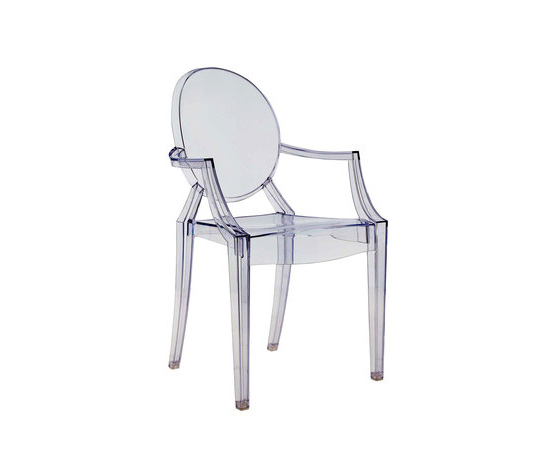
Louis Ghost, Kartell, Designer Phillipe Starck, 2004, transparent polycarbonate injected in a single mould
×Hopefully the future of plastics will also be a closed circle, because it is no longer possible to imagine our lives without plastics - but using them sustainably is the greatest challenge facing contemporary designers.
dvn [divan], Superieur, Designer Superieur, material fibreglass
Truffle, Porro, Designer Jean Marie Massaud, 2005, material fibreglass
Dora 922, Zanotta Designer Ludovica+Roberto Palomba, 2005, Polyethylene
Sign, MDF Italia, Designer Piergiorgio Cazzaniga, 2006, polyamide (nylon 6), rotationally molded, gloss lacquered in white, red, yellow or black
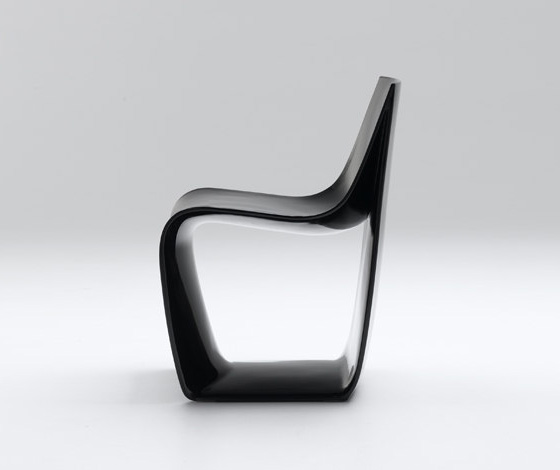
Sign, MDF Italia, Designer Piergiorgio Cazzaniga, 2006, polyamide (nylon 6), rotationally molded, gloss lacquered in white, red, yellow or black
×Piedras, Magis Designer Javier Mariscal, 2006, rotational-moulded polyethylene
Showtime Sofa Outdoor, Bd Barcelona, Designer Jaime Hayón, 2006, manufactured in a single piece in rotomolded mediumdensity polyethylene, integrally-dyed

Showtime Sofa Outdoor, Bd Barcelona, Designer Jaime Hayón, 2006, manufactured in a single piece in rotomolded mediumdensity polyethylene, integrally-dyed
×Cokka, Scab Design, Designer Luisa Battaglia, 2007, Air moulded polypropylene frame reinforced with fibreglass
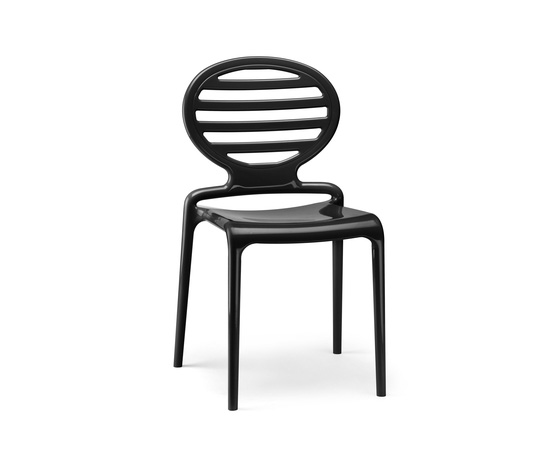
Cokka, Scab Design, Designer Luisa Battaglia, 2007, Air moulded polypropylene frame reinforced with fibreglass
×Vegetal, Vitra, Designer Ronan Bouroullec, Erwan Bouroullec, 2008
Nido, Nido, Designer Eva Marguerre, 2009, fibreglass drenched in resin
Tip Ton, Vitra, Designer Edward Barber, Jay Osgerby, 2011
Nemo, Driade, Designer Fabio Novembre, 2011, lacquered polyethylene monobloc
The Invisibles Light, Kartell, Designer Tokujin Yoshioka, 2011, transparent thermoplastic technopolymer
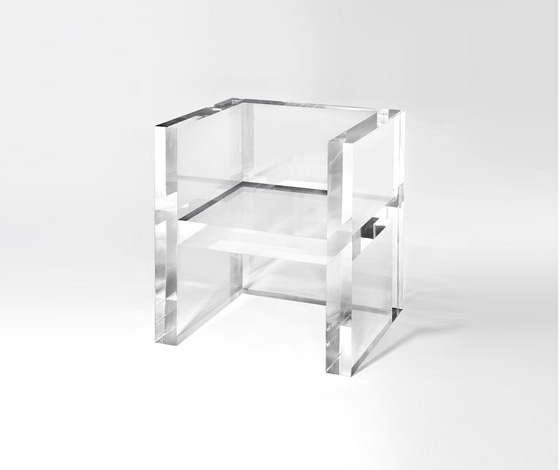
The Invisibles Light, Kartell, Designer Tokujin Yoshioka, 2011, transparent thermoplastic technopolymer
×